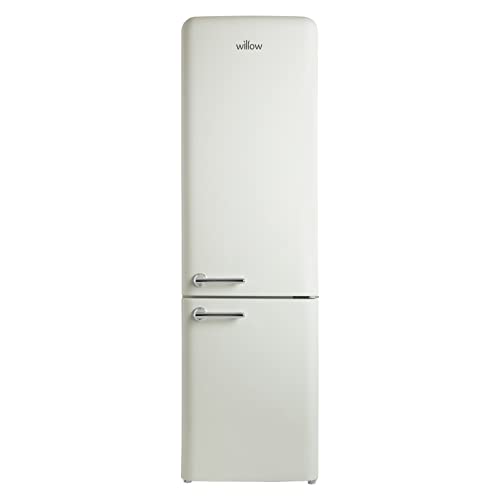A Look At The Future What Will The Fridge UK Industry Look Like In 10 Years?
The Comprehensive Guide to Refrigerators in the UK
Fridges are a necessary device in every household, serving a vital function in food conservation and safety. The UK market uses a diverse range of fridge types, sizes, functions, and brand names. This short article aims to offer an in-depth understanding of refrigerators readily available in the UK, including their features, energy effectiveness, and elements to consider when purchasing.
Kinds Of Refrigerators Available in the UK
When searching for a refrigerator, it is very important to understand the numerous types available. Each type comes with its own set of functions and functions, catering to various needs and choices. The most typical kinds of fridges discovered in the UK include:
1. Leading Freezer Refrigerators
- Description: The traditional style, including the freezer compartment on top.
- Pros: More affordable, roomy, easy access to fresh food.
- Cons: Limited freezer area, the top may be less practical for bulk products.
2. Bottom Freezer Refrigerators
- Description: Freezer is situated at the bottom, permitting easier access to fresh food.
- Pros: Greater benefit, much better visibility of fresh items.
- Cons: Usually more expensive, some might battle with large frozen items.
3. Side-by-Side Refrigerators
- Description: Features 2 vertical compartments, one for the fridge and one for the freezer.
- Pros: Ample storage area, simple to gain access to both frozen and fresh foods.
- Cons: Wider footprint, they might not fit in smaller kitchens.
4. French Door Refrigerators
- Description: Combines features of bottom freezers and side-by-sides, with 2 doors for the fridge on top.
- Pros: Stylish design, spacious, and frequently includes advanced features.
- Cons: Higher rate point, lines up inadequately with smaller kitchen designs.
5. Compact Refrigerators
- Description: Smaller designs created for minimal areas.
- Pros: Ideal for small apartments or workplaces, energy-efficient.
- Cons: Limited storage capability, might do not have functions.
6. Integrated Refrigerators
- Description: Designed to mix perfectly with kitchen area cabinetry.
- Pros: Custom fit, visual appeal, increases home value.
- Cons: Higher cost, might use less versatility in positioning.
7. Smart Refrigerators
- Description: Equipped with Wi-Fi and smart innovation functions.
- Pros: Advanced includes like touch screens and internal cams.
- Cons: Expensive, more complex to repair.
| Refrigerator Type | Ease of access | Average Price Range | Energy Efficiency |
|---|---|---|---|
| Top Freezer | Moderate | ₤ 300 – ₤ 600 | Typical |
| Bottom Freezer | High | ₤ 400 – ₤ 800 | Above Average |
| Side-by-Side | Easy | ₤ 800 – ₤ 1500 | Differs |
| French Door | High | ₤ 800 – ₤ 2000 | High |
| Compact | Limited | ₤ 200 – ₤ 500 | Average |
| Integrated | Custom | ₤ 1000 – ₤ 2500 | High |
| Smart | Variable | ₤ 1200+ | High |
Key Features to Consider
- Energy Efficiency: Look for models that are energy-efficient. In the Uk fridge freezer, devices are ranked from A (most efficient) to G (least effective). An A+ rating and above can result in considerable energy savings.
- Capability: Choose a fridge with enough capacity for your home. A basic guideline is 100-200 liters per person.
- Sound Level: Consider designs that run quietly, especially if the kitchen area is near living spaces.
- Cooling Technology: Features like frost-free innovation are worth the investment, as they lessen maintenance.
- Adjustable Shelves: Having adjustable racks enhances the versatility to keep bigger items.
- Temperature Control: Check for user friendly temperature level controls and zones for various types of food.
- Design: Choose the style and color that matches your kitchen aesthetic, whether you prefer a modern-day stainless-steel appearance or a timeless retro finish.
Buying Tips
- Identify Your Needs: Consider your cooking practices, family size, and cooking area space.
- Set a Budget: Refrigerators been available in different price ranges. Develop a spending plan before you begin going shopping.
- Research Study Energy Ratings: Invest in energy-efficient designs to save money on energy costs.
- Read Reviews: User experiences can offer insights into reliability and performance.
- Compare Brands: Some brands are understood for their sturdiness while others might provide more innovative functions.
Regularly Asked Questions (FAQs)
1. For how long do fridges generally last?
- Fridges normally last in between 10 to 20 years, depending upon the brand name and how well they are maintained.
2. Are there any maintenance pointers for prolonging the life of a refrigerator?

- Routinely tidy the coils, check the door seals, and occasionally thaw if necessary to preserve ideal performance.
3. What is the very best size refrigerator for a family of 4?
- For a household of 4, a refrigerator with a capability of around 400-600 liters is normally enough.
4. Do I need to stress over energy consumption when purchasing a refrigerator?
- Yes, energy consumption is very important. Try to find systems with high energy efficiency ratings to lower monthly costs.
5. Should I select a fridge with a water and ice dispenser?
- This feature can be convenient, particularly for families. Nevertheless, it might need more maintenance than standard models.
Purchasing a refrigerator is a considerable decision for any family in the UK. With numerous types offered, each with its distinct features and benefits, it is crucial to assess individual requirements before choosing. By considering factors such as energy efficiency, capacity, and style looks, customers can pick a fridge that aligns well with their way of life, ultimately improving their cooking area experience while securing food quality and freshness.


